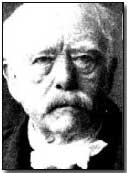Encyclopedia - Alliances - Entente and Central Powers
 The Entente Powers
comprised a military alliance - driven by a variety of inter-related
treaties - of France, Great Britain and Russia.
The Entente Powers
comprised a military alliance - driven by a variety of inter-related
treaties - of France, Great Britain and Russia.
In opposition to the Entente alliance were the Central Powers, another alliance of great powers: Austria-Hungary and Germany. This ensured that pre-war Europe was essentially dominated by two armed camps.
The Entente alliance sprang from the military concerns of Germany's neighbours to east and west - Russia and France; accordingly in 1894 they signed an alliance based upon fears of growing German power.
Britain subsequently forged alliances with both Russia and France once it became clear that Germany intended to construct a navy to match the Royal Navy in the late 1890s. Thus while the Entente Alliance was by no means a formal alliance, inter-twining treaties effectively rendered it thus. The term itself was much used in 1914 and 1915, but was replaced by the more general 'Allies' thereafter, and was taken to include other nations including Italy and Japan.
In contrast Germany had a long-standing alliance with the fading Austro-Hungarian empire dating back to the 1870s. Other treaties (for example both sides allied to Italy at various stages) combined to ensure a tangled alliance system in 1914; by the close of the war the Central Powers had been extended to incorporate Bulgaria and Turkey. Click here to read more about the alliance system and the causes of war in 1914.
Contrary to popular belief the United States never formally joined the Entente/Allied alliance, choosing instead to wage war against the Central Powers on an independent basis as an 'Associated Power'.
Stormtroopers comprised specially trained German assault troops used in 1918.
- Did you know?
